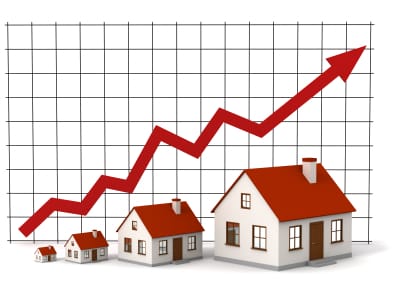- Growth Gazette
- Posts
- Affordable housing never again!
Affordable housing never again!
Today we look at the reason why house prices are through the roof (literally) and what forces are at play here.
They are for a simple reason. Money. Those at the top desire house prices to stay high and go even higher despite the fact that the cost to build houses in terms of building materials and work hours have roughly stayed the same as well as the population growth. So, why? Well today we will find out…

Pesky Zoning regulations
Yes, American zoning make it very hard for affordable housing to take hold that it makes only the biggest and most expensive development for millionaires that make any economic sense for developers and that is the ones that they will prioritise.
It’s like a massive upfront deposit just to get started, so you might as well just sell to those who have the money, which for younger people who want to get on the housing ladder is a massive disadvantage just to get a foothold in the housing market.
Some people just want it that way
Many older people and middle aged people, who already own all the houses in all of America, typically bought their house for $60,000 and have seen it skyrocket in value to the average figure of $450,000 in just a couple of decades, and that’s a lot of money for them and they don’t want it to stop.
There are other forces too, many local governments make lots of money from property taxes, and it’s better for them to keep a massive money making machine for them rather than to give it away.
Not to mention all the big voices of Corporate America would be heard loud and clear, from the big banks specifically, that ubiquitous affordable housing is against their interest, the mortgage and loan market is huge because of high house prices and it’s one of their most major forms of income and they don’t want it going away either.
What does this mean for the future
As house prices rise and rents rise alongside each other, coupled with stagnant wages for the last 20 years, we are going to see an entire generation have to deal with a mortgage and rent rates as high as 40% of a persons entire income, not to mention rising university and student debt, will hamper consumer spending and less disposable income for everyone.
This means that many companies specialising in the consumer market will see stagnant growth especially at the moment with higher interest rates pushing up mortgages and student loan repayments, and lower consumer spending to drive down inflation and avoid even more instability.
The Headlines

Over the past decade, the corridor south of Central Park has been transformed into a playground for the super rich. JULIE LARSON/THE WALL STREET JOURNAL
Speaking of the housing market, the US will unveil new measures to prevent money laundering through the real estate market, once a popular market for oligarchs, terrorists and other corrupt individuals, to secretly stash their cash in the lucrative real estate market which is estimated to have laundered $2.3 billion between 2015 to 2020. The new rule mandates many real estate professionals who process these transactions to report the identities of cash transactions of new apartments to an anti-money laundering crime agency.
VinFast, the Vietnamese EV maker will go public for the first time on Nasdaq after a merger with a special purchase acquisition company (SPAC) has taken place, and will be traded with the ticker VFS on August 15. The company, which is valued at around $20 billion, on par with many US EV companies such as Rivian and Lucid, still faces many challenges, such as the fact it hasn’t made profit yet and operates at a loss and continues to wildly fluctuate, not to mention established EV car brands risk reducing profitability in the wake of Tesla price cuts.
Space tourism in action as a mother-daughter pair head to space in a Virgin Galactic spaceship, the second of its kind has taken place today, lasting 70 minutes in total with a few minutes in zero gravity, also on the flight is the first olympian and second man with parkinsons Jon Goodwin. Its a rather pricy experience, with the cheapest space tickets go for $400,000, cheap in comparison to other space companies, such as SpaceX, which go for $55 million.
So, the only way to space? A lot of money building a company or a lot of time working to be a NASA scientist. Otherwise, the VR headset is the closest we’ll ever be to the stars.